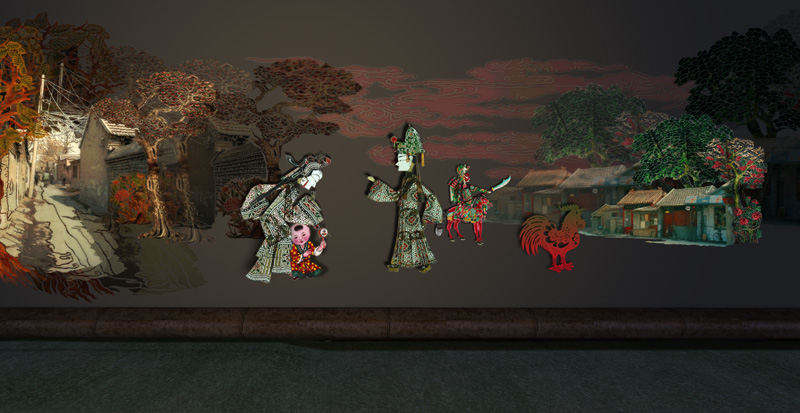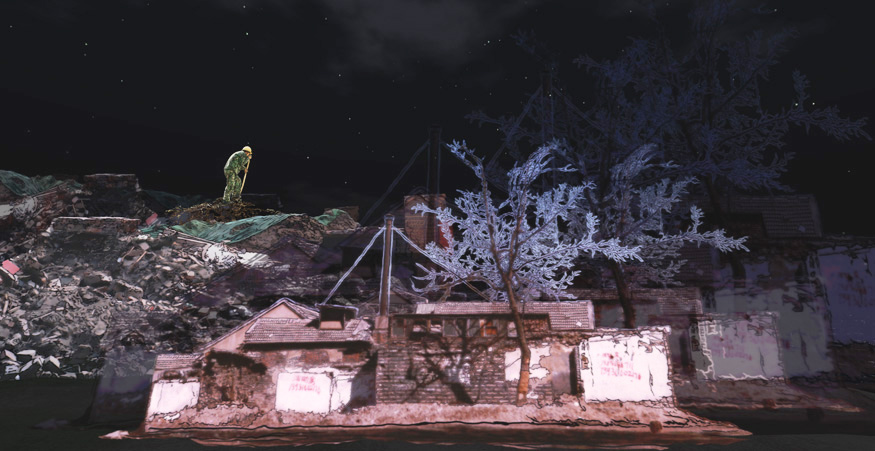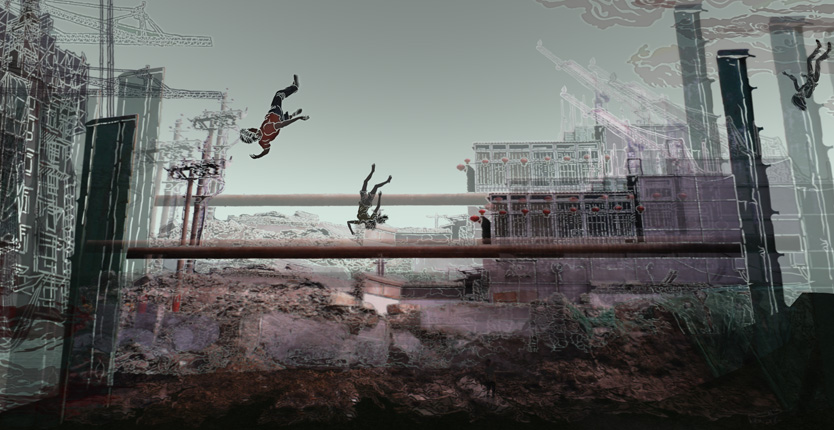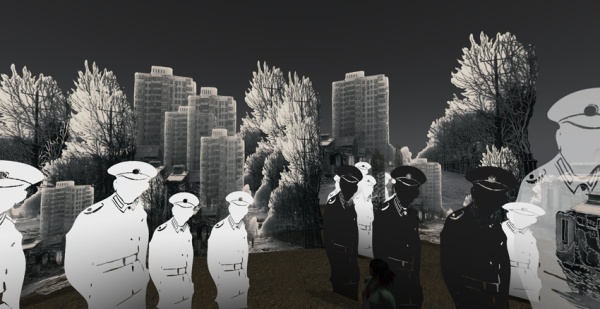http://www.artpractical.com/column/locating-technology-/
By Genevieve Quick
May 14, 2014
Artists have long used approaches like elaborate and surreal
narratives and phenomenological or physical experiences to explore the
breadth of reality. At its most basic level, reality is a physical or
social interaction with a string of consequences that extends beyond
oneself. Artists, philosophers, scientists, and technologists continue
to unravel reality as a complicated matrix of self and perception. The
emerging technology of augmented reality (AR) creates hybridized spaces
that merge virtual objects and narratives with the everyday space we
inhabit. As AR develops solutions for the many real-world issues it
faces (like application, ownership, access, adoption, and format), these
issues affect AR’s artistic and political potential.
......
Using smartphones,
1 AR participants scan a Quick Response
(QR) code or AR symbol to interact with virtual objects that appear
superimposed on the everyday world through their phone’s screen. Unlike
two-dimensional images, AR objects are vector-based renderings with X,Y,
and Z axes—the same type of data used in 3D printing. Moreover, artists
and designers assign global positioning satellite (GPS) coordinates to
their objects, placing them in a meta-space that overlaps the tangible
space users occupy. Users’ phones coordinate their GPS location with
that of the AR object; as participants move through space, the virtual
images on their smartphones shift in perspective. As its name suggests,
AR attempts to augment, which on a rhetorical level is an improvement
made through addition. In contrast, its technological cousin virtual
reality (VR) attempts to simulate, which allows designers and artists
unlimited freedom to create the context for their narrative or
experience. While apps like Layar
2 suggest that AR is an
additional level placed upon reality, it is actually a hybrid space that
merges users’ real, physical embodied location with the virtual and
visual experience.
Subsequent to the 1989 Tiananmen uprising, when the People’s Liberation
Army violently thwarted protestors, Chinese government censors have
attempted to eliminate references to the uprising on the internet and
mass media.
5 In response, the exiled and anonymous collective 4Gentlemen
6
created 3D models of the Goddess of Democracy—like the one erected by
students at the Central Academy of Fine Arts during the
demonstration—and “Tank Man,” the anonymous figure who stood against a
plethora of tanks on Chang’an Avenue. Photographs of the Goddess of
Democracy and “Tank Man” are widely circulated around the world and have
become iconic images of individual bravery and military authority.
4Gentlemen have placed their AR objects at the GPS locations of the
Tiananmen Square protests. Additionally, Google Maps indicates that the
AR Goddess of Democracy has been placed at international squares of
public protest, like Green Square, Tripoli, Libya; Al Tahrir Square,
Cairo, Egypt; Tahrir Square, Sana’a, Yemen; Pearl Square, Al Manama,
Bahrain; Union Square, NY; and Piazzo San Marco, Venice, Italy, to name a
few.
7 Although erecting physical monuments of protest is
challenging in repressive regimes, thus far these AR objects seem to be
able to resist censorship. Unlike physical monuments, these AR monuments
are easily replicated and moved, and can linger long after protests
have occurred.
......
With fundamental questions about the platform and its use, adoption, and
so on still to be determined, AR poses a potential political and
economic battle for the everyday space we inhabit. As billboards sprung
up along the once ill-defined spaces of the interstates, these routes
became commodifiable. Additionally, the internet, the so-called “super
highway,” has become dotted with banner ads as commercial interests
compete for our attention. Our everyday space, like when walking down
the street, may also become a contested zone, as every physical point is
a GPS location with the potential for being a pop-up ad or a location
for governmental censorship or surveillance.







